Medical Marijuana Kicked My Chronic Illness’ Butt – Learn How this Inflammation Killer Works
Disclosure:
Some of the products I mention use affiliate links, which means if you click and make a purchase, I may earn a small commission. This is at no cost to you; some links may even offer you additional discounts. I only recommend products I have personally tried and loved. All opinions are my own, and try to support small businesses as much as possible by linking directly to them.
In the wake of the ravaging aftermath of the chronic stress and microwave radiation sickness, my immune system was shocked into overdrive. Even after a few years of closely examining diet, supplements and exercise to restore my inner balance and regain sanity, the residual effects continued stoking the flames of inflammation.
My body was developing its own version of homeostasis, which morphed into multiple debilitating chronic conditions including Chronic Fatigue Syndrome (CFS/ME), Mast Cell Activation Syndrome (MCAS), and (from my own understanding) quite possibly POTS (in addition to EHS, of course).
Whether it was spinach and avocados, too much exercise or hot shower, I’d be left dizzy and lightheaded or with occasional itchy hives again. I’d get bi-weekly “crashes” of extreme fatigue that would last for days, and generalized anxiety would tighten its grip around my nervous system far too often.
I wasn’t exactly living my best life.
Where there’s smoke, there’s fire

Finally, one of my literal dozens of blood tests finally uncovered the source of inflammation: elevated levels of my C-Reactive Protein (CRP), an inflammatory marker that’s implicated in cardiovascular disease and very uncommonly seen among young people within a healthy weight.
Oof. Something was critically in need of redress.
Phase Low Dose Naltrexone
As averse as I’ve become to prescription medication of all kind, I resolved to let go of my incredulity and try Low Dose Naltrexone (LDN), a repurposed microdose of naltrexone, at the suggestion of my integrative doc.
After all, more integrative and functional practitioners have been prescribing it, and at such a miniscule dose, something about it “felt” more natural. Not to mention, I wasn’t about to put my body and heart at risk over a moral hang-up.
The problem was that, despite the high praise I’d been hearing about LDN, as a repurposed, “experimental” drug, it required lots of trial and error, which translated to a high risk for side effects.
And side effects it produced. Believe me, I really wanted to make it work, experimented with dosage, timing; took several days off between doses, but it wasn’t the hassle.
Perhaps I’ll stumble across something else with equal anti-inflammatory power, I thought.
A green blessing in disguise

Here’s where things got interesting.
A few months prior to all this, I hit an unexpected wall with my sleep. As in, I stopped sleeping entirely, and had to almost retrain my brain how to sleep again (which I will definitely be covering later!).
After having caved to taking an “as-needed” sleep medication with disastrous long-term side effects almost every night, I decided to try Mother Nature’s tried-and-true sleep aid: medical marijuana.
Of course, like most rebellious teenagers, I wasn’t unfamiliar with “the devil’s lettuce.” But since I never really enjoyed the sensation of baking myself like a batch of pot brownies, THC had been off my wellness radar.
Now, however, I had to make a choice between weed or continuing dementia-accelerating benzodiazepines, so it was obviously a no-brainer (no pun intended, I swear).
Luckily, now that weed had been decriminalized and made legal recreationally, there was no need to buy little dime baggies of mystery pot; instead at my local dispensary, I had the luxury of a modern consumer who could pick and choose a strain, potency, and consult enthusiastic sales reps with questions and concerns. Sometimes progress gets it right.
Anyway, I purchased a little Indica “sleep” tincture blended with my favorite CBG/CBD oil and went on my way.

And my god, the green herb folks sure didn’t lie – literally 5mg of THC lulled me to sleep like a newborn baby almost every single night. It was magical.
Since there weren’t any side effects or grave long term risks, I kept it up. By dropping just a pinch of liquid into my evening tea along with my CBD, it was an easy addition to my nightly routine. No extreme sedation; no next-day grogginess; just soothing, blissful sleep.
Science compels you!
Around this time, I’d stumbled across some pretty impressive literature on the effects of marijuana on the immune system (which we’re getting to), and how people were using it for inflammation-derived conditions like chronic fatigue, fibromyalgia, and, of course, pain.
Now that I thought about it, it had been a pretty long time since I suffered any major CFS crashes or MCAS flares. Huh. Well, that’s peculiar, I thought.
Time to summon my inner human-guinea pig and do some experimenting!
So, I figured I’d ride out the weed routine until my next blood test just to see if my almost-daily dosings would be strong enough to crank down the knobs on the inflammation.
Nothing else in my lifestyle changed, save for the fact I was finally able to establish a consistent workout routine without suffering for days thereafter. Either way, with very few extraneous variables, it made for a pretty solid experiment.
Putting it to the test
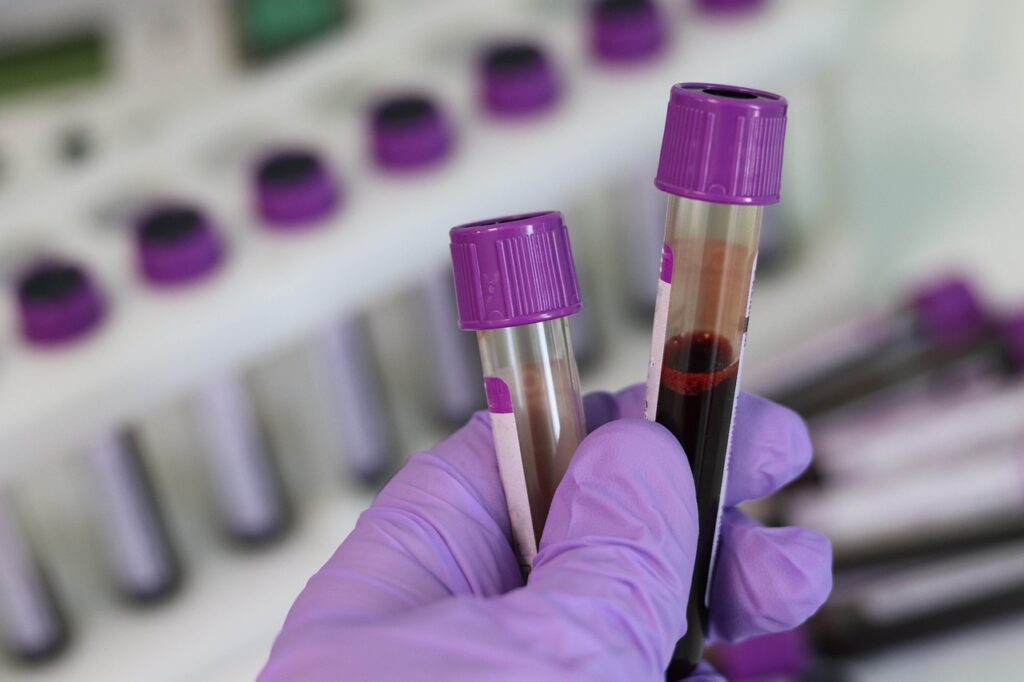
Four months after the original blood test, and almost exactly three months after beginning my “herbal” medicine, it was time to put the federal contraband to the test. There was no way, my rational brain insisted, that becoming a low-grade pothead could ever quell serious, life-threatening inflammation.
But when those test results came back, that cynical “no way” instantaneously became a mouth-agape “no. Freaking. Way.”
My C-Reactive Proteins hadn’t just lowered: they plummeted back into a healthy range. And I’d been living almost entirely fatigue and flare-free!
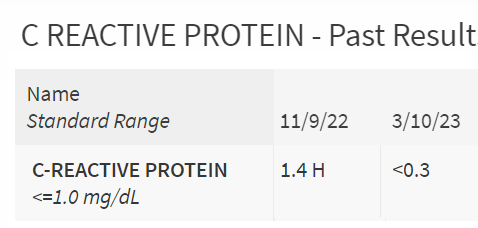
Why did this happen?
Again, nothing else in my routine, lifestyle, or diet had changed to cause this. Could I simply have recovered naturally? Well, sure, but if both science and my personal case study stood the test, I’m compelled to believe it was cannabis that did the heavy lifting.
Researchers have been proving study after study that cannabis works as a robust immuno-modulatory agent, so it acts a bit like a fire engine once our bodies become consumed by this widespread inflammation. Better yet, it even turns off the heat at the source.
Check out the studies
A recent study from 2020 by Okafor et al. measured inflammatory biomarkers among self-reported cannabis users and found “lower levels of each biomarker of systemic inflammation.” The biomarkers that were measured included C-reactive proteins (the ones we just talked about), Interleukin 6 and fibrinogen.
Another study on lifetime marijuana users of African descent measured significantly lower levels of interleukin-6, which plays an integral role in “chronic inflammation and auto-immunity.” That’s no small feat.
And here, a systematic review (analysis of multiple studies) supports the above by finding that that the administration of THC along with CBD was linked to the reduction of several pro-inflammatory cytokines, such as tumor necrosis factor alpha, interleukin (IL)-1β, IL-6, and interferon gamma.
THC alone did not produce any differences, indicating that the presence of CBD was necessary to facilitate these results. Interestingly, I always take my THC with a healthy dose of CBD anyway!
While the results of the first study were considered to be “imprecise,” we can’t refute such a compelling pattern of results.
So how does Cannabis do this?
It’s all about the Endocannabinoid system
Here’s how it all works. Basically, the endocannabinoid system (ECS) encompasses a certain set of cell receptors which function like little locks on the surfaces of our cells; and their molecules, or endocannabinoids, serve as “keys” to activate them.
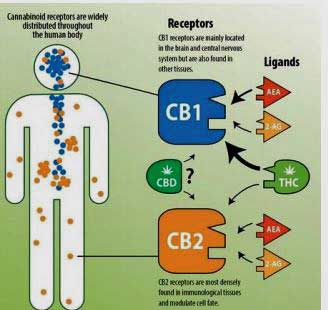
Our bodies create these endocannabinoids (the “keys”) on their own, but the cannabinoids found in cannabis are phyto-cannabinoids. Another example of these exogenous chemicals can be found in other plants that contain phyto-estrogens, or chemicals that mimic estrogen. But unlike estrogen-mimicking agents that have earned a bad rap, however, these plant-based cannabinoids can positively affect our immune health.
Now, the the most-studied cannabinoid receptors or “locks” on the the surface of our cells are CB1 and CB2 receptors, which are scattered throughout different areas throughout the body.
CB1 receptors are found in nerve and immune cells in various brain regions, the spinal cord, and nerve endings. They affect pain perception and immune modulation, and when activated by cannabinoids, mitigate pain – which is why medical marijuana is so commonly prescribed for pain management.
CB2 receptors are mainly concentrated in immune cells as well as in both the central (CNS) and peripheral nervous systems (PNS). These CB2 receptors can be activated to produce either anti- or pro-inflammatory effects, depending on the molecule. Considering these receptors are also found in the brain, this partially explains some of the mechanisms behind neuro-inflammation, a key component behind conditions like Chronic Fatigue (ME/CFS) and EHS/MCS.
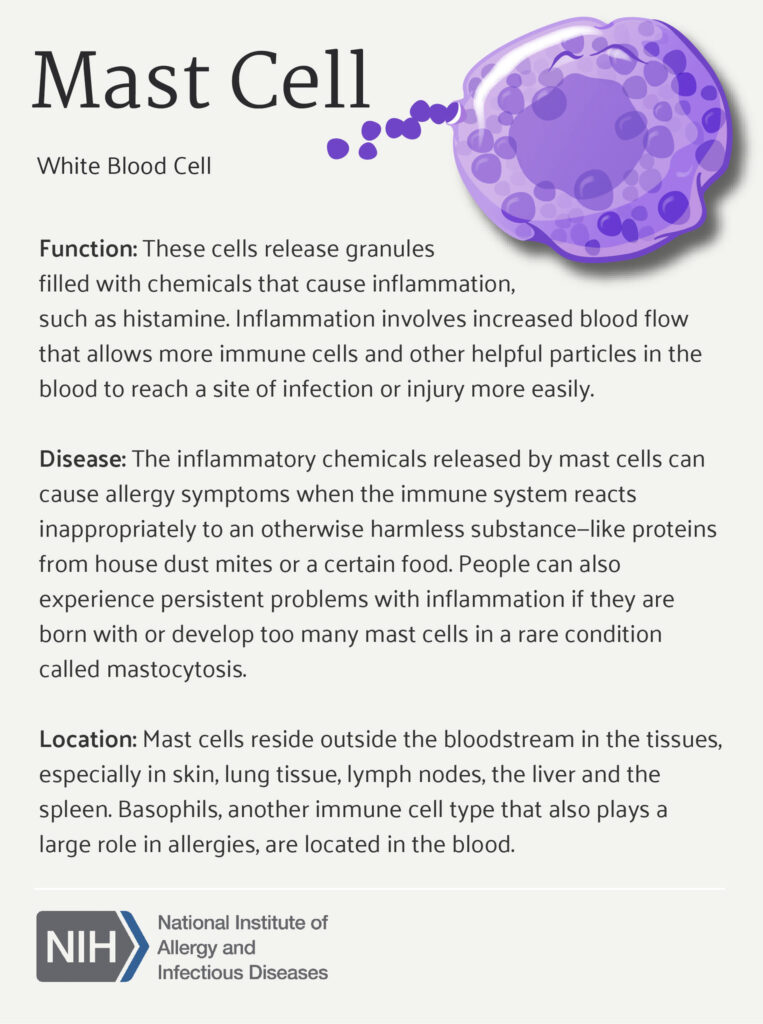
Mast cells also contain both CB1 and CB2 receptors, which, when activated by cannabinoids, become suppressed, which prevents them from degranulating. This is a godsend for those with Mast Cell Activation Syndrome (MCAS), as it’s during this degranulation process where several inflammatory chemicals are released – and ultimately gives those of us with allergies or histamine reactions a really bad time.
While THC binds to CB1 receptors (producing the stoned feeling), CBD blocks CB2 receptors, which, in turn, urges the body to more efficiently utilize its own cannabinoids and prevents these cells from sounding the alarms and releasing their pro-inflammatory cytokines, too.
In short, all this binding and blocking of the CB1 and CB2 receptors by the phyto-cannabinoids found in cannabis calms the pain signals, puts the brakes on our immune cells, and stops them from releasing all these excessive inflammatory agents that ultimately make us ill.
By definition, this categorizes cannabinoids as immunosuppressants, which in the right dose and context, keeps our immune systems humming along without raging out of control.
The reason this is such a critical component to recovery lies in the new discovery that those of us with with chronic conditions actually suffer from – get this – an endocannabinoid deficiency. It’s almost as if nature has provided the missing pieces to our chronic illness puzzle all along!
Incorporating Cannabis into your routine

Of course this option isn’t legally viable for everyone, but if you’re in a state where medical marijuana is legal, this could be a massive boon to your wellness routine.
On the other hand, if you’re sitting there thinking, “omg, there is NO WAY my nervous system could handle something psychoactive like that” – trust me, I was right there with you. You don’t have to get blasted to reap the effects: I noticed improvements with less than 5mg a night.
I also always recommend supplementing with a high-quality CBD or CBG tincture for maximum effect (remember the article above?). Not to mention, a CBD/CBG blend offsets any anxious side-effects, and can help lull you to sleep, to boot.
And speaking of sleep, Indica sleep tinctures are also excellent starters since Indica offers more of a warm, full-bodied relaxation than that conventional “high” that comes to mind when you think of marijuana (that’s Sativa). Just a few milligrams dropped under the tongue or blended into your favorite sleepy time tea creates the perfect environment for healing and relaxation.
For for high-quality CBD oil, click here to get 25% off products from Joy organics, or check out my guide to using your CBD. Happy healing!
